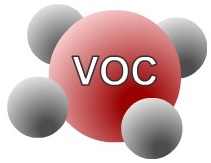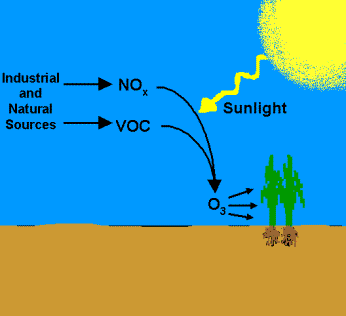Oxidation, or combustion as it pertains to the air pollution control industry, can simply be defined as a rapid combination of oxygen with a fuel (in this case, a volatile organic compound, or VOC). This process will result in the release of energy in the form of heat and, if completed correctly in our world, the process will also release carbon dioxide and water.
The basic combustion reaction looks like this:
CXHY + (x + y/4)O2 + Heat = xCO2 + (y/2)H2O + Heat
Where: CxHy is any hydrocarbon
O2 is oxygen
CO2 is carbon dioxide
H2O is water
The air pollution control industry typically refers to the equipment which performs this process as oxidizers (i.e. thermal oxidizers, catalytic oxidizers, or regenerative thermal oxidizers). This is because most processes have excess oxygen (excess air), producing a lean mixture or an oxidizing combustion reaction. This blog will only focus on these type of reactions.
So far, we have talked about the end results of the combustion reaction. These end products are the same for all fuels containing different combinations of hydrogen and carbon within their chemical formulas. However, it should be noted that how these end products are achieved can take many different paths or reaction mechanisms. Therefore, different flames, cold spots, or quenching surfaces can produce many varied and unknown intermediate products.
For example, carbon and hydrogen atoms may combine and disassociate to form unstable compounds like carbon monoxide and different types of aldehydes. The types of compounds formed and the speed of their formation and disassociation depend upon the reaction conditions. Other reaction conditions that can affect the combustion process other than temperature are items like pressure, O2 levels present, and mixing.
Most oxidizers operate at or near atmospheric pressure, so we will not explore that variable in depth. As discussed above, most oxidizers also operate with excess air, oxidizing the atmosphere, which means that the combination of the final products is more dependent on temperature and mixing.

The mixing of the VOC is important to the combustion reaction. This reaction needs a minimum temperature to start the process and efficiently proceed to the desired end products of CO2 and H2O. Mixing is very important to provide a uniform temperature to start the reaction. This is key to lowering fuel gas costs.
Mixing is also important with regards to the mixture of VOC and O2. Every particle of fuel or VOC must contact a particle of oxygen in order for the combustion reaction to take place. Oxygen content and residence time at the combustion temperature is also important.
The reaction rate of the combustion reaction is dependent on temperature; for instance, an increase in temperature actually decreases the amount of time that is needed to convert CO to CO2. A decrease in O2 concentration would require better mixing, due to the lack of availability of O2 for the reaction completion. Unfortunately, temperature, oxygen concentration, and residence time to reduce CO actually must be controlled in the opposite direction to reduce the amount of nitrogen oxides (NOx) emitted, so raising the temperature isn’t always the best solution.
If you have any questions about oxidation, please feel free to contact our experts by calling 847.550.4339 or









